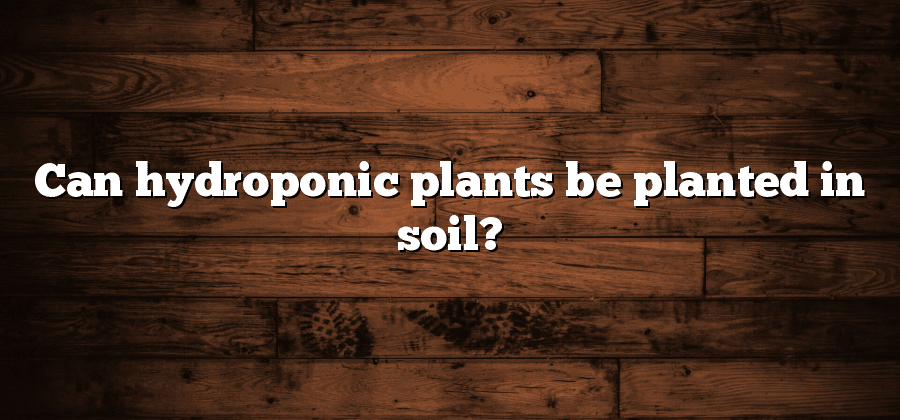Hydroponic Plant Growth Factors
Hydroponic plant growth is influenced by various factors that need to be carefully managed in order to achieve optimal results. One of the key factors is light. Plants require an appropriate amount and quality of light for photosynthesis to occur, and different types of plants have different light requirements. It is crucial to provide the right intensity and duration of light to ensure healthy growth and development.
Another important growth factor for hydroponic plants is the nutrient solution. Unlike traditional soil-based cultivation, hydroponic systems rely on a nutrient-rich solution to provide plants with essential minerals and elements. The nutrient solution needs to be carefully balanced and adjusted based on the specific needs of the plants being grown. Ensuring that the plants receive the correct combination and concentration of nutrients is essential for their overall growth, productivity, and health.
Hydroponic Plant Nutrient Requirements
Hydroponic plant nutrient requirements play a crucial role in the success of soilless growing systems. As hydroponic plants are not able to extract nutrients from the soil, it becomes necessary for growers to provide them with a balanced mix of essential elements. These nutrients are typically delivered to the plants in the form of a nutrient solution, which can be customized based on the specific needs of different plant species.
The main nutrients required by hydroponic plants are classified into two categories: macronutrients and micronutrients. Macronutrients, such as nitrogen, phosphorus, and potassium, are needed in larger quantities and play vital roles in plant growth and development. Micronutrients, on the other hand, are needed in smaller amounts but are equally important for healthy plant growth. These include elements like iron, zinc, and manganese.
To ensure optimal growth, it is essential for hydroponic growers to carefully monitor and adjust the nutrient levels in the solution. This can be done through regular testing of the solution’s pH and electrical conductivity (EC), which indicates the nutrient concentration. By maintaining the proper balance of nutrients, growers can provide their hydroponic plants with everything they need to thrive, ultimately leading to higher yields and healthier crops.
Advantages of Soilless Hydroponic Systems
Soilless hydroponic systems offer several advantages over traditional soil-based gardening methods. One of the key advantages is the ability to control and optimize nutrient levels. In a soil-based system, nutrients are present in the soil, but their availability and absorption by plants can be unpredictable. In contrast, hydroponic systems allow for precise control and customization of nutrient solutions, ensuring that plants receive the right balance of essential elements for optimal growth. This not only increases overall plant health and productivity but also minimizes the risk of nutrient deficiencies or excesses that can lead to stunted growth or crop failure.
Another advantage of soilless hydroponic systems is their water efficiency. In conventional soil-based gardening, water is absorbed by the soil and tends to spread out, making it difficult for plants to access every drop. In hydroponic systems, water is delivered directly to the plant’s roots, minimizing wastage and increasing water-use efficiency. This is particularly important in regions with limited water resources, as it allows for the cultivation of crops with significantly less water usage compared to traditional methods. Additionally, since water is continuously circulating in the system, it is constantly being supplied with dissolved oxygen, which promotes healthier root growth and overall plant vitality.
Types of Hydroponic Systems
Hydroponics, a soilless method of growing plants, offers various types of systems to cater to different needs and preferences. One of the most common types is the Deep Water Culture (DWC) system. In this system, plants are suspended in a nutrient-rich water solution, with their roots submerged. Oxygen is constantly supplied to the roots through an air pump, ensuring optimal growth. DWC systems are popular due to their simplicity and cost-effectiveness, making them suitable for beginners.
Another popular hydroponic system is the Nutrient Film Technique (NFT). This system involves a thin film of nutrient solution flowing over a sloping tray, with plants placed in small holes on the tray. The constant flow of the nutrient solution ensures that the plants receive a steady supply of nutrients, while their roots absorb the required amount. NFT systems are known for their efficient use of water and nutrient solutions, making them ideal for those conscious of resource conservation.
Overall, the choice of hydroponic system depends on factors such as space availability, budget, and the types of plants being grown. Whether it’s a DWC system for its simplicity or an NFT system for water efficiency, hydroponic enthusiasts can explore the different types to find the most suitable option for their gardening needs.
Challenges of Growing Hydroponic Plants in Soil
One of the challenges that farmers face when growing hydroponic plants in soil is the risk of soil-borne diseases. Unlike traditional soil-based agriculture, hydroponics relies on a soilless medium for plant growth. However, in some cases, growers may choose to use soil as part of their hydroponic system. This can potentially introduce pathogens and pests that are commonly associated with soil, putting the health and productivity of the plants at risk.
Another challenge is the difficulty in controlling the nutrient levels in the soil. In a hydroponic system, growers have precise control over the nutrient solution that the plants receive. However, when using soil as a medium, it can be more challenging to maintain the optimal nutrient balance. Soil composition can vary greatly, and the nutrients available to the plants may not always be in the desired ratios. This can lead to nutrient deficiencies or toxicities, affecting the overall health and growth of the hydroponic plants.
In conclusion, growing hydroponic plants in soil presents its own unique challenges. The risk of soil-borne diseases and the difficulty in controlling nutrient levels are just two of the obstacles that growers must overcome. Despite these challenges, many farmers still choose to incorporate soil into their hydroponic systems, as it can provide certain benefits and opportunities for plant growth.






